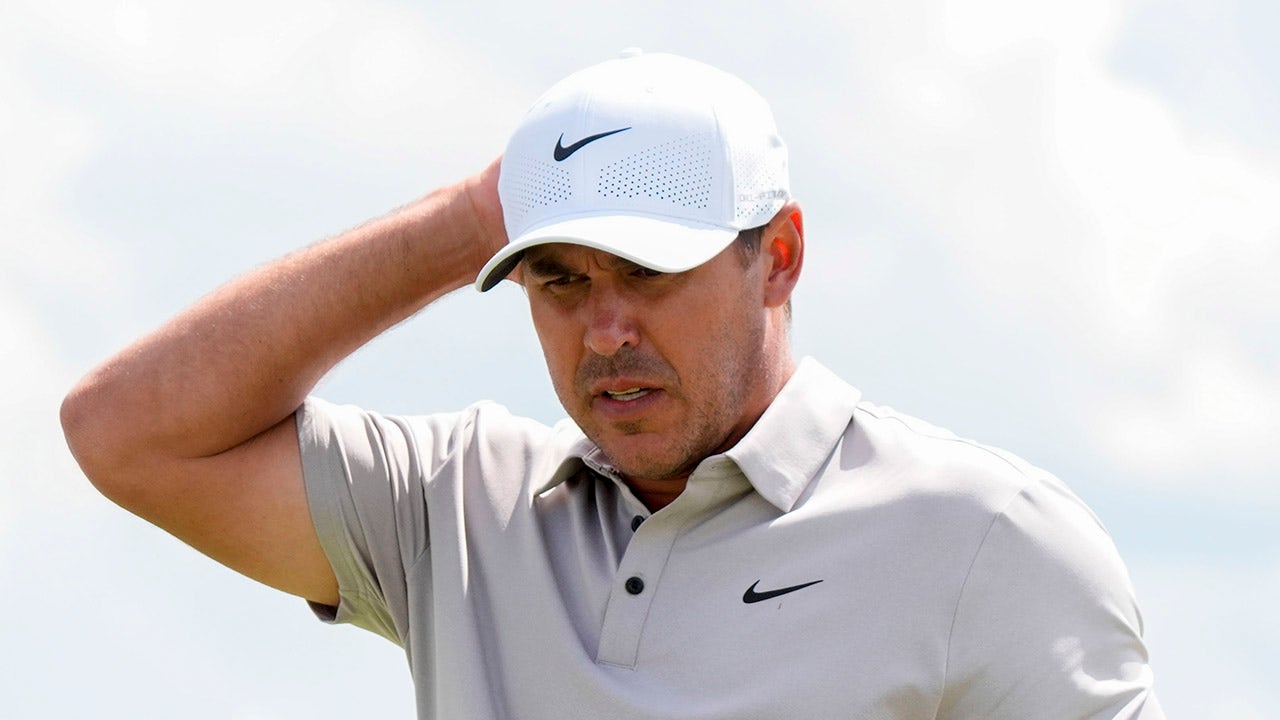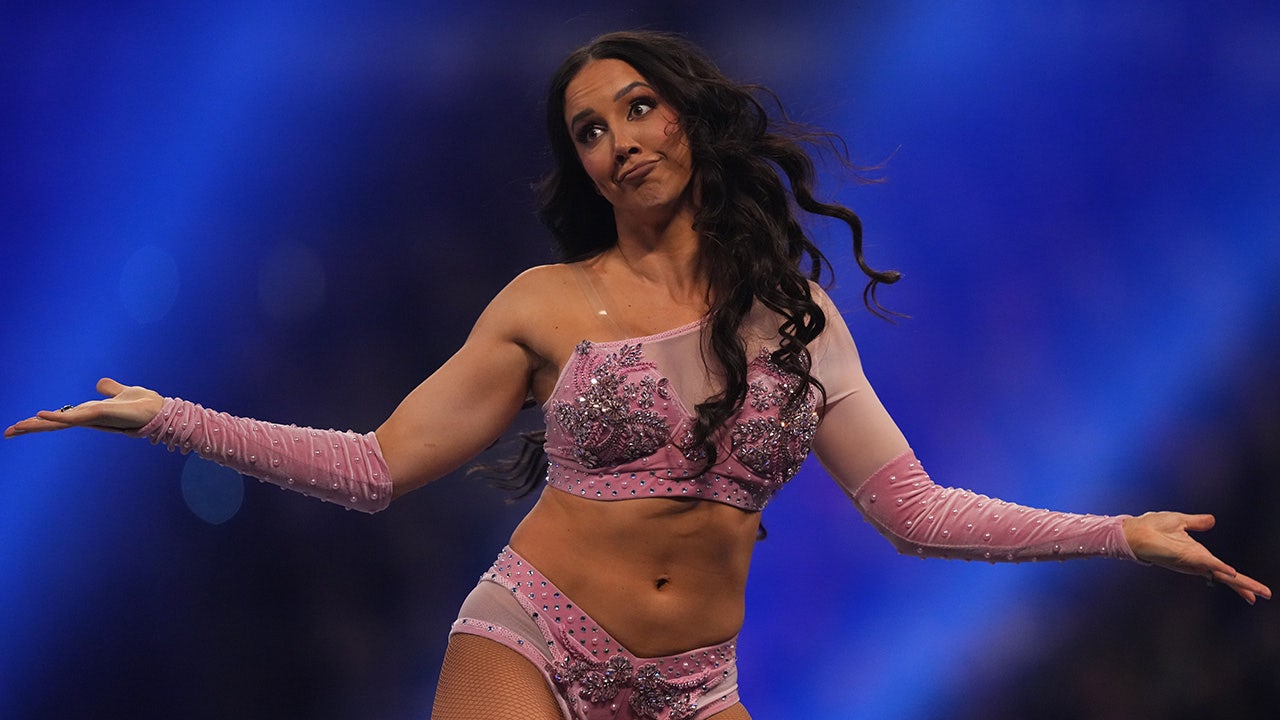Jamie MoCrazy almost died skiing, now she wants to help others

No one expected Jamie MoCrazy to be alive after her fall. The chances of survival are slim if the brain starts bleeding in eight places. Her death report was written in the helicopter that took her to Vancouver Hospital, where she would spend the next few weeks of her life. Family and friends waited, hoping for a miracle, but fearing the worst.
She was competing in the World Tour Finals of freestyle skiing in Canada when disaster struck. After successfully completing her first run and finishing fourth in the standings, she increased the difficulty for her second and final run.
For the first woman to ever do a double somersault at the X-Games in slopestyle skiing – an event where athletes race down a slope over obstacles – and who was among the top two in the world in the three years leading up to her event finishing the podium was not an option. “You don’t remember fourth place,” she tells CNN Sport.
So she tried a double flat-7 off-access backflip, a trick she’d been practicing for a week leading up to the finals.
“It was an off-access trick and it had never been done before, so I pushed the boundaries again,” explains the now 30-year-old, recalling her last memories of that April day in 2015. “But even though the trick was big That wasn’t the only reason I fell into a coma.
MoCrazy — she changed her legal name from Crane-Mauzy to her childhood nickname after getting married last May — kissed her sister Jeanee, who also competed, albeit in the separate halfpipe discipline, and took off for what would become a career-defining feat . Instead, what happened next changed her life. In fact, it nearly killed her.
She has no memory of what happened when her head hit the snow with a whiplash as she landed from her somersault. She fell into a natural coma, was intubated on the mountain and a battle began to save her life.
“During the first 24 to 48 hours there was a strong awareness that the injury could cost Jamie’s life and they made that very clear that, statistically, and from how she presented and the degree of damage, it was likely that she was not going to survive,” her sister Jeanee tells CNN.
During those days in Vancouver, MoCrazy became one of the first people in North America to have catheters placed in her brain, allowing doctors to instantly monitor and adjust her brain’s oxygen and nutrient levels, as well as her blood pressure.
Ten days after the accident, the then 22-year-old opened her eyes against the odds, only for a few seconds, but long enough to add a flicker of light to the darkest of days. But even then, as Jeanee explains, her sister was “almost totally unconscious the whole time” and the right side of her body was paralyzed.
It took the Connecticut native six weeks to remember who she was and recognize her parents. She had a vague memory of Jeanee, but not of her younger sister, Jilly. “It was like she was being reborn, like she was a baby. Basically she had to grow again from there,” says Jeanee.
MoCrazy was flown to Salt Lake to be closer to her family, allowing her mother Grace, better known as “Mama Fruit” who had studied early childhood development, to live with her at the hospital where she introduced what Jeanee describes as “wellness techniques” to complement the medical care her daughter received.
It was the start of what the former skier calls the second version of himself, “Jamie 2.0.” Recovery was slow, often painful. There were physical and mental obstacles to overcome. “We did everything together,” Jeanee says of that summer, even going to the bathroom, she adds, to lessen the confusion her sister would suffer when she was alone.
MoCrazy was intubated for so long that it took her two months to learn how to swallow again.
“She had to have thickened fluids because the muscles were pretty much destroyed by the breathing tube,” says Jeanee.
Then MoCrazy had to learn to talk again. First she had to be taught how to express herself and then, in Jeanee’s words, how to cognitively “articulate and speak like an intellectual adult,” which improved when she returned to college and later graduated from Westminster College in Salt Lake City with a degree in communications.
Her mother pushed her to learn algebra again, arguing that her brain needed to relearn its critical thinking skills. It was her mother who taught her to read with kindergarten books and writing.
“I was basically doing therapy or sleeping,” says MoCrazy, adding that she wouldn’t be the person she is today if her mom wasn’t taking care of her.
And just like a toddler learning to master climbing, she walked stairs every day, endlessly up and down with the help of family and a treadmill, which is placed around the waist so that a caregiver can assist by holding the band , as she rebuilt muscle strength and muscle memory in an attempt to walk again.
 American slopestyle skier Jamie Crane-Mauzy, right, of Park City, Utah, who suffered a severe traumatic brain injury during a competition in Whistler, speaks at a news conference at Vancouver General Hospital in Vancouver, BC, on Tuesday, July 19, 2016. (THE CANADIAN PRESS/Darryl Dyck)
American slopestyle skier Jamie Crane-Mauzy, right, of Park City, Utah, who suffered a severe traumatic brain injury during a competition in Whistler, speaks at a news conference at Vancouver General Hospital in Vancouver, BC, on Tuesday, July 19, 2016. (THE CANADIAN PRESS/Darryl Dyck)
CLIMBING AN ALTERNATIVE PEAK
But in many ways, the physical challenges she faced were the easiest. “I got a lot of attention and applause… ‘Wow, Jamie is walking again. Jamie rides a bicycle “… my cognition and my emotions were extremely compromised and it took me a long time to heal,” she says.
It took her five years to emotionally recover from the accident, says MoCrazy.
“No one knew that, no one paid attention, no one really understood,” she says. “And it has been scientifically proven that emotions are affected by traumatic brain injury. It affects your emotions and it also changes your life.
“That doesn’t mean your life has to be any worse. I use the metaphor of climbing an alternate peak…the views are perhaps even more amazing. But you have to climb. And while you are climbing, your life will be different and you will have different challenges and different opportunities.”
Even when she was in a wheelchair, her intention was to compete again. Her goal was to live the only life she had known, that of a high-achieving young athlete who hopes to become an Olympian.
Then, during the first winter of her recovery, reality hit.
“I felt old and washed up when I was 23,” she says. “No vision, no future. I felt ready and going back to college definitely helped me set goals and get tested on things and actually get back to performing and building a new life for myself.
Jeanee went to New Zealand that winter for her first competitive event since her sister’s accident.
“I just cried the whole game, I couldn’t handle it at all,” she says, “and when I came back, that was the hardest part, because even when it was all-consuming beforehand, once she woke up, she was very happy and she was a lot of fun and she was like a really nice kid to be around.
“And we played toys and did our projects… it was like raising a 10-year-old, but mostly a fun 10-year-old. Then, in the winter, she started to feel like she was okay, but she wasn’t okay and at that point she was more like the rebellious teen.
Jeanee says her job during that period was to protect her older sister and make sure she didn’t take any car keys with her, because no matter how skilled MoCrazy felt, the truth was she was incapable of multitasking.
“She can literally only have one thought in her head. That was the harder part. She wasn’t completely healed emotionally, but physically she was,” says Jeanee. “So the whole world treated her like she was okay, except for those of us who lived with her and knew she wasn’t okay.”
MoCrazy’s life has undoubtedly changed since the accident. She is the same, she says, although some of her childhood traits have returned.
“I’m just way crazier, but that’s how I was as a kid,” she says. “I am still adventurous and still hardworking and ambitious. I think a lot of my traits have stayed the same.”
She has since returned to the mountain where she nearly died to celebrate her marriage to the love of her life, Reggie, an experience she describes as “one of the most beautiful, breathtaking, most emotional of my life.”
MoCrazy is also skiing again, albeit with caution. “I still don’t do tricks and I still don’t compete,” she says, adding that while her brain is stronger now, she doesn’t know what would happen if she hit her head hard again.
She says she feels “fully recovered” from the injury, although life has since brought more setbacks her way, namely the death of her eldest sister, Amy, from leukemia in 2022, who was one of the doctors who cared for her nursed at Vancouver General Hospital.
“She saved me, and I couldn’t save her and that was really challenging,” she says. “So I went back to therapy, but it’s definitely not because of my brain injury.”
Her life’s purpose now is to help others who have suffered traumatic brain injuries and raise awareness of recovery methods, co-founding the non-profit organization MoCrazy Strong with Jeanee and her mother with the goal of “changing the narrative” and “back to give’.
In March of this year, MoCrazy and her sister took to Capitol Hill to speak with lawmakers and show a recent short documentary titled “#MoCrazyStrong” made about her recovery process, one that was mostly family-oriented, she says.
“There are so many decisions,” she says, her family made “that would have changed the outcome you see,” explaining, by way of example, that her mother would tape off her stronger hand to let her use the weaker one.
“I understand how lucky my recovery was in the factors that I had so much training in my family of caregivers,” she says.
“And being a white, privileged, gifted athlete with finances has made a huge difference in my recovery. So my goal is to share that… and save millions of lives. And we’re starting to do that and that feels very rewarding to be able to use this story and save people with it.
“I feel completely healed. And something that really helps with my satisfaction in life is that I feel like I’m on an alternate peak and I’m seeing some amazing views and I’m helping others.




